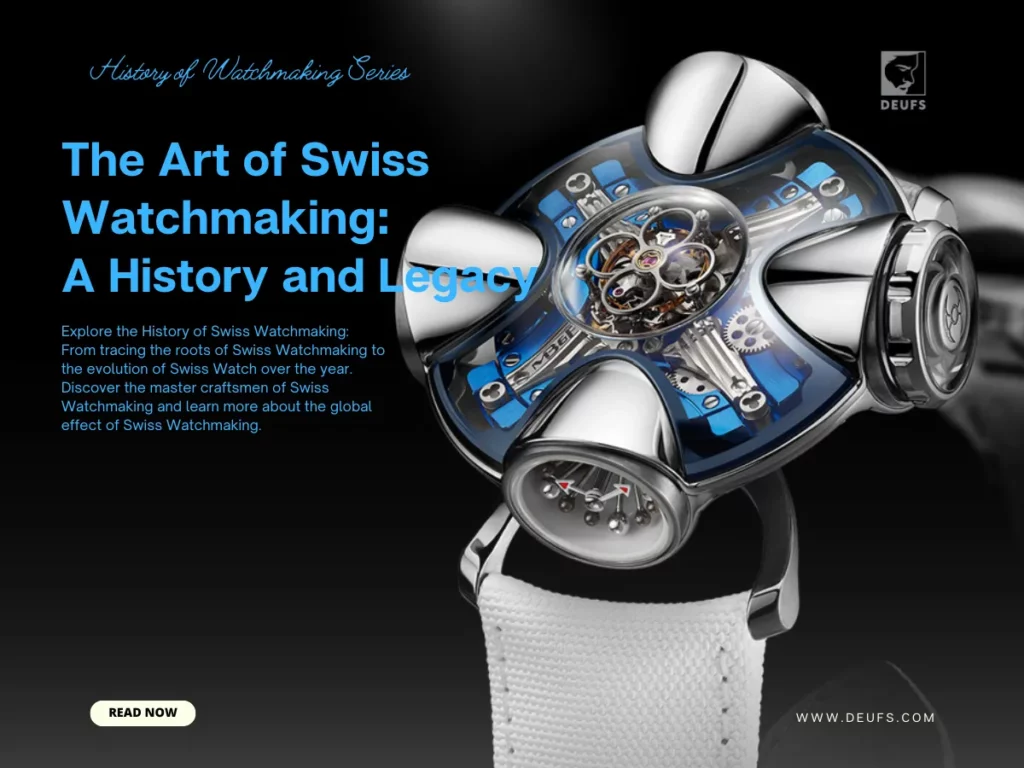
Swiss watchmaking has a rich and fascinating history that stretches back centuries. From its humble beginnings in the 16th century, Swiss watchmaking has grown to become an important and influential part of the global watchmaking industry.
In this article, we will explore the history of Swiss watchmaking, from its early origins to its current status as a major player in the world of luxury timepieces.
Tracing the Roots of Swiss Watchmaking
The art of watchmaking has its roots in the Renaissance, when European craftsmen began to develop increasingly sophisticated timekeeping devices. In the centuries that followed, watchmaking flourished in many parts of Europe, but it was in Switzerland that the industry truly came into its own.
The origins of Swiss watchmaking can be traced back to the late 16th century, when a group of skilled craftsmen began producing high-quality timepieces in the Swiss Jura Mountains. These early watchmakers were known for their attention to detail and their innovative techniques, which helped to set them apart from their competitors.

During the 17th century, Swiss watchmaking experienced a period of rapid growth and development. New technologies and techniques were developed, and the industry began to expand beyond the borders of Switzerland. By the 18th century, Swiss watchmaking had become a major industry, with many skilled craftsmen producing high-quality timepieces for a global market.
The Rise of the Swiss Watchmaking Industry
The industrial revolution brought about significant changes in the world of Swiss watchmaking. As mass production techniques became more widespread, the Swiss watchmaking industry began to grow and expand at an even faster rate.
In the 19th and early 20th centuries, Swiss watchmaking became a major player in the global market. Many of the world’s most prestigious brands were founded during this time, and Swiss watchmaking became synonymous with luxury and quality.
The Evolution of Swiss Watchmaking
Swiss watchmaking has always been at the forefront of technological advancement and innovation. In the 19th century, the invention of the industrial loom revolutionized the production of watch components, making it possible to mass-produce high-quality parts and create more affordable timepieces for the growing middle class.
In the 20th century, Swiss watchmaking entered a new era of technological advancement with the introduction of quartz movements, which made watches more accurate and reliable. The industry also continued to innovate with the development of new materials and manufacturing techniques, allowing for the creation of complex and sophisticated timepieces.

In recent years, the Swiss watchmaking industry has adapted to the emergence of smartwatches and other new technologies, while continuing to produce luxury timepieces that are coveted by collectors and enthusiasts around the world. Brands such as Rolex, Patek Philippe, and Omega are among the most respected and renowned in the industry.
The Master Craftsmen of Swiss Watchmaking
Despite the advances in technology, Swiss watchmaking remains a highly skilled and labor-intensive craft. From the initial design and engineering to the final assembly and finishing, each Swiss watch is the product of many hours of work by skilled craftsmen.
One of the key techniques in Swiss watchmaking is the use of CNC (Computer Numerical Control) machines to produce high-precision components. This allows for the creation of complex movements with incredible accuracy and reliability.
Another important aspect of Swiss watchmaking is the attention to detail and finishing. Swiss watches are known for their beautiful finishes, which are achieved through techniques such as polishing, brushing, and engraving. These finishing touches add to the beauty and value of each timepiece.
The Role of Swiss Watchmaking in the Global Luxury Market
Swiss watchmaking is an important part of the global luxury market, with Swiss brands commanding a significant share of the market for high-end timepieces. The success of Swiss watchmaking is due in part to the country’s reputation for quality and precision, as well as the unique designs and innovations of its leading brands.
In addition to producing luxury timepieces, Swiss watchmaking is also a significant contributor to the Swiss economy. The industry employs tens of thousands of people and generates billions of dollars in revenue each year.
Conclusion
Swiss watchmaking has a long and illustrious history, and its impact on the global watchmaking industry is undeniable. From its early beginnings in the 16th century, to its current status as a major player in the world of luxury timepieces, Swiss watchmaking has always been driven by innovation, quality, and a commitment to excellence. As the industry continues to evolve and adapt to changing market trends, it is clear that the legacy of Swiss watchmaking will endure for many years to come.
If you are interested in learning more about Swiss watchmaking, there are many resources available online, including videos, articles, and museum exhibits. You can also visit Switzerland and tour some of the famous watchmaking regions, such as the Vallée de Joux and the Geneva Lake District.
So, the next time you admire a beautifully crafted Swiss watch, take a moment to appreciate the history and legacy behind it. From the master craftsmen who create each timepiece to the innovations that have shaped the industry, Swiss watchmaking is a testament to the skill and passion of those who make it.






